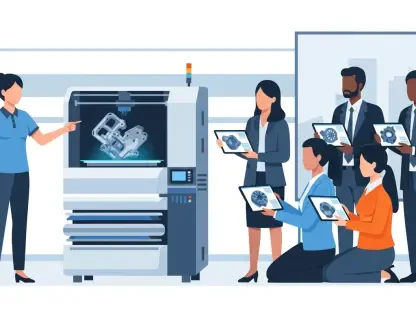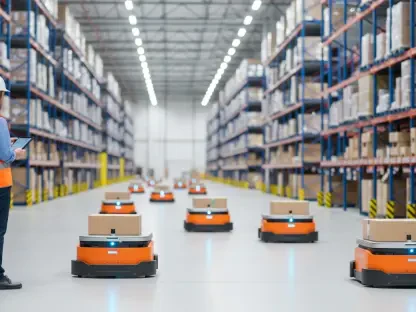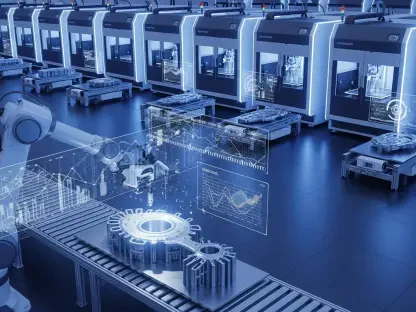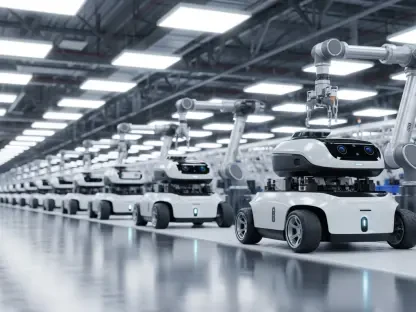I’m thrilled to sit down with Kwame Zaire, a renowned manufacturing expert with a deep focus on electronics, equipment, and production management. With his thought leadership in predictive maintenance, quality, and safety, Kwame brings a unique perspective on how emerging technologies like AI are shaping industries and influencing market dynamics. In this conversation, we’ll explore the recent volatility in AI stocks, the transformative potential of artificial intelligence in business, and the broader implications for manufacturing and retail sectors.
What’s your take on the sharp declines we’ve seen in AI-driven stocks like Nvidia and Palantir recently?
Well, Julien, I think what we’re witnessing is a combination of market correction and growing skepticism. Both Nvidia and Palantir rode a massive wave of hype around AI, and while their technologies are undeniably powerful, the stock prices got ahead of the fundamentals. Investors are starting to question whether the returns on AI investments can match the expectations. In manufacturing, I’ve seen similar patterns with new tech—early excitement often outpaces practical implementation. There’s also broader market unease, with studies pointing to limited measurable gains from AI in many corporations, which adds fuel to the sell-off.
How much do you think these declines are influenced by doubts about the real-world impact of AI investments?
Quite a bit, actually. There’s a gap between the promise of AI and the reality of integrating it into operations. In my field, I’ve advised companies on adopting AI for predictive maintenance, and while the potential is huge, the upfront costs and learning curve are steep. Many firms aren’t seeing quick returns because they lack the infrastructure or data maturity to leverage AI effectively. This kind of feedback loops into investor sentiment—when reports highlight that corporations aren’t reaping benefits yet, it shakes confidence in stocks tied so heavily to AI’s future.
With Nvidia’s upcoming profit report being such a focal point for Wall Street, what do you think investors are most eager to learn from it?
Investors are looking for concrete evidence that Nvidia can sustain its growth trajectory. They want to see strong numbers, especially in segments tied to AI chip demand, and hear reassuring guidance about future orders. In manufacturing, we rely on Nvidia’s tech for everything from design simulations to equipment automation, so their performance is a bellwether for industrial adoption of AI. Beyond the numbers, there’s a hope for clarity on how Nvidia plans to address competition and supply chain challenges—those are critical for long-term confidence.
Turning to Palantir, they’ve seen incredible growth this year before the recent drop. What do you believe fueled that surge in their stock value?
Palantir’s rise was driven by a mix of strong contracts, especially in government and defense, and a broader narrative around AI’s potential to transform data analytics. Their platform’s ability to handle complex datasets resonated with industries looking to make sense of big data, including manufacturing firms optimizing supply chains. But I think the market got caught up in the story more than the substance at times. Their growth was impressive, but the valuation started to look disconnected from the pace at which they can scale and deliver consistent profits.
Do you think the hype around AI has led to overvalued stocks in this sector, and if so, how can companies like Nvidia and Palantir justify their prices?
Absolutely, the hype has played a big role. AI is a buzzword that can inflate expectations beyond what’s realistic in the short term. In manufacturing, I’ve seen how easy it is to overestimate the speed of tech adoption—similarly, stock prices for these companies soared on future promises rather than current earnings. To justify their valuations, they need to demonstrate not just innovation but scalability and profitability. That means showing how their AI solutions translate into cost savings or revenue growth for clients across diverse sectors, not just niche applications.
Despite the current pullback, many still see AI as the next big revolution in business. How do you view its long-term potential, especially in industries you’re familiar with?
I’m very bullish on AI’s long-term impact, particularly in manufacturing. It’s already changing how we approach quality control, equipment maintenance, and safety protocols through real-time data analysis. Beyond that, AI can optimize entire supply chains, reducing waste and downtime. I think industries like healthcare, logistics, and energy will also see massive benefits as AI matures. The key is patience—real transformation takes time as companies build the right systems and skills to harness it. We’re talking a decade or more for widespread, measurable impact in many cases.
Shifting to retail, we’ve seen companies like TJX, behind TJ Maxx and Marshalls, post strong earnings while others struggle. What do you think sets them apart in this tough market?
TJX’s success comes down to their business model and adaptability. They thrive on offering value through discounted, off-price merchandise, which resonates with cost-conscious consumers right now. In manufacturing terms, they’ve got an efficient supply chain that lets them pivot quickly to meet demand trends. While other retailers grapple with inventory issues or shifting consumer habits post-COVID, TJX seems to have a firm grasp on what their customers want—value and variety. Their ability to forecast demand and manage stock is something even industrial firms could learn from.
Looking ahead, what’s your forecast for the role of AI in shaping the future of industries like manufacturing and retail over the next few years?
I expect AI to become a cornerstone in both sectors, but the journey will be uneven. In manufacturing, we’ll see deeper integration into automation and predictive maintenance, driving efficiency and cutting costs—think smarter factories with minimal downtime. In retail, AI will refine customer experiences through personalization and inventory management, helping companies like TJX stay agile. But the pace depends on overcoming hurdles like data quality and workforce training. My forecast is cautiously optimistic: we’re on the cusp of significant change, but it’ll require sustained investment and a willingness to adapt over the next five to ten years.









